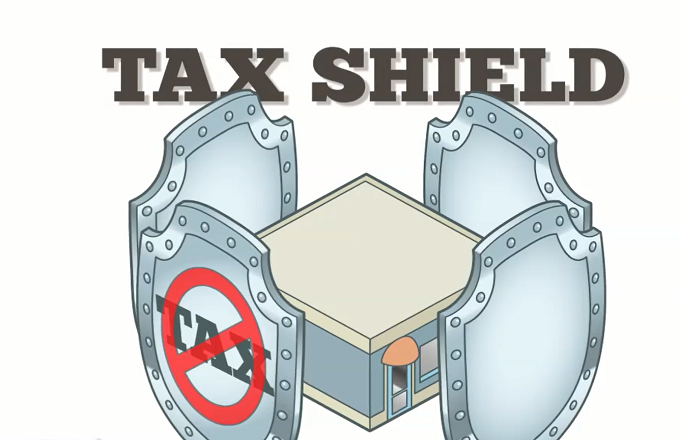
So, for instance, if you have $1,000 in mortgage interest and your tax rate is 24%, your tax shield will be $240. Charitable contributions are deductible up to 60% of your AGI for cash donations and 30% for donations of assets. Homeowners can deduct interest on mortgage debt up to $750,000 (or $1 million for mortgages initiated before December 17, 2017), providing a significant tax shield. For example, if you have a tax rate of 24 percent and you have $2,000 in mortgage interest, you can determine that your tax shield would be $480. There are all sorts of opportunities to help reduce the total tax amount you owe when submitting tax filings.
Learn the most fundamental concept of tax optimization.
By taking advantage of legitimate deductions, credits, or other specific tax provisions, individuals and businesses can legally lower their taxes and retain more of their earned income. A tax shield is a valuable financial tool used to reduce taxable income through permissible deductions. This concept is applicable to both individuals and corporations, great ways to green your business allowing them to decrease their overall tax liability. In essence, a tax shield is a strategic approach to minimize taxes by capitalizing on various allowable deductions under tax laws. The term “Tax Shield” refers to the deduction allowed on the taxable income that eventually results in the reduction of taxes owed to the government.
Is Tax Shield the Same As Tax Savings?

The tax shield on interest is positive when earnings before interest and taxes, i.e., EBIT, exceed the interest payment. The value of the interest tax shield is the present value, i.e., PV of all future interest tax shields. Also, the value of a levered firm or organization exceeds the value of an equal unlevered firm or organization by the value of the interest tax shield. It helps both new and established companies raise capital efficiently. Interest payments are deductible expenses, and the deductible interest paid on debt obligations reduces the business’s taxable income. However, it will hurt the company’s interests if the debt goes above tolerable limits and become a hindrance leading to the pausing of active projects.
How Tax Shields Work
Taxpayers who have paid more in medical expenses than covered by the standard deduction can choose to itemize in order to gain a larger tax shield. An individual may deduct any amount attributed to medical or dental expenses that exceeds 7.5% of adjusted gross income by filing Schedule A. While tax shields offer financial benefit, they should be used carefully. Overdependence on tax shields could lead to financial stress if laws change or deductible expenses decrease. Furthermore, excessive borrowing to create interest expense tax shields can lead to significant financial risk. In this post, we’ll dive into a concept that is essential for understanding tax planning and its impact on businesses and individuals alike – the tax shield.
Calculation of Tax Shield (Step by Step)
- A company is reviewing an investment proposal in a project involving a capital outlay of $90,00,000 in a plant and machinery.
- An example would be mortgage loans, which may come with a shield option for buyers as mortgage interests are deductible expenses against income.
- The company can also acquire the equipment on lease rental basis for $15,000 per annum, payable at the end of each year for three years.
- The lower the taxable income, the lower the amount of taxes owed to the government, hence, tax savings for the taxpayer.
Taxpayers who wish to benefit from tax shields must itemize their expenses, and itemizing is not always in the best interest of the taxpayer. It only benefits you to itemize when the total of all of your deductions exceeds the standard deduction for your filing status. The typical deductions accounted for in a tax shield calculation tend to be interest paid on any debts, depreciation of assets, and sometimes, amortization of intangible assets. The Tax Shield Formula is actively used by companies for strategizing their financial decisions, especially those related to debt management.
It is one of the tax shielding options available to businesses and is also known as a corporate tax incentive for debt. However, the interest here pertains to the interest payments, not the interest income, as most companies consider interest payments deductible expenses. To fully benefit from tax shields, it’s important to identify and claim all eligible deductions.
Although tax shield can be claimed for a charitable contribution, medical expenditure, etc., it is primarily used for interest and depreciation expenses in a company. Therefore, the tax shield can be specifically represented as tax-deductible expenses. A tax shield refers to a legal and allowable method a business or individual might employ to minimize their tax liability to the U.S. government. Properly employed, tax shields are used as part of an overall strategy to minimize taxable income.
A tax shield will allow a taxpayer to reduce their taxable income or defer their income taxes to a time in the future. To calculate a tax shield, you need to know the value of your tax-deductible expenses and your own individual tax rate. A tax shield formula is a method businesses use to reduce their taxable income, thus decreasing the amount of tax they owe. It involves deducting allowable expenses from taxable income, such as interest payments, depreciation, or other deductible expenses. A tax shield is a financial strategy that allows businesses or individuals to reduce their taxable income, resulting in a lower tax liability.
Although tax shields have traditionally been used by wealthy individuals and corporations, middle-class individuals can also benefit from tax shields. Similar to the tax shield offered in compensation for medical expenses, charitable giving can also lower a taxpayer’s obligations. In order to qualify, the taxpayer must use itemized deductions on their tax return.
